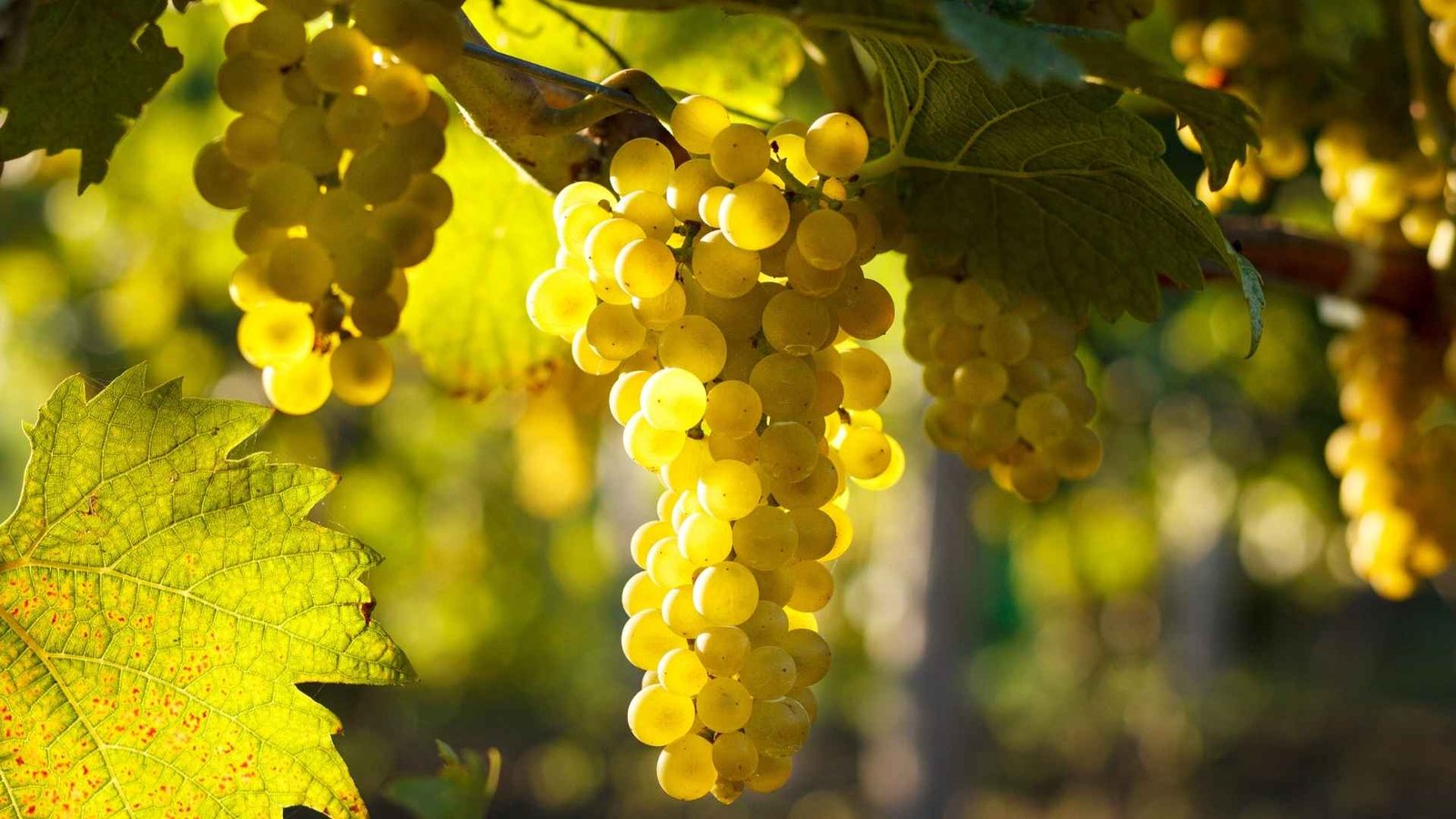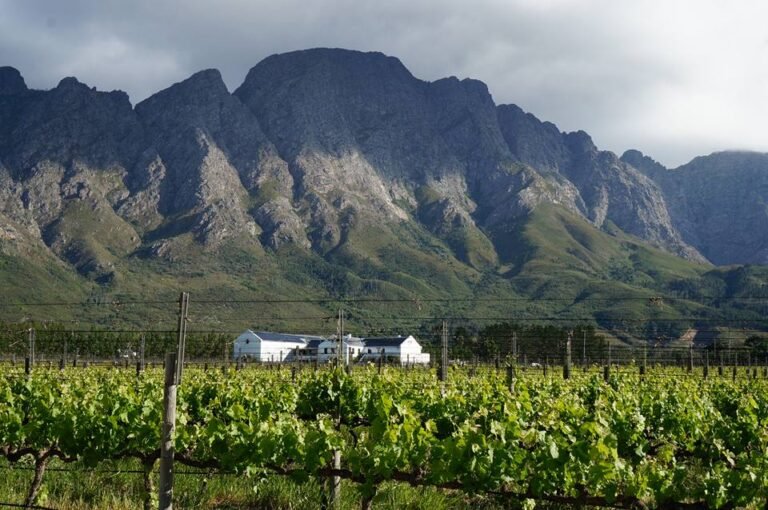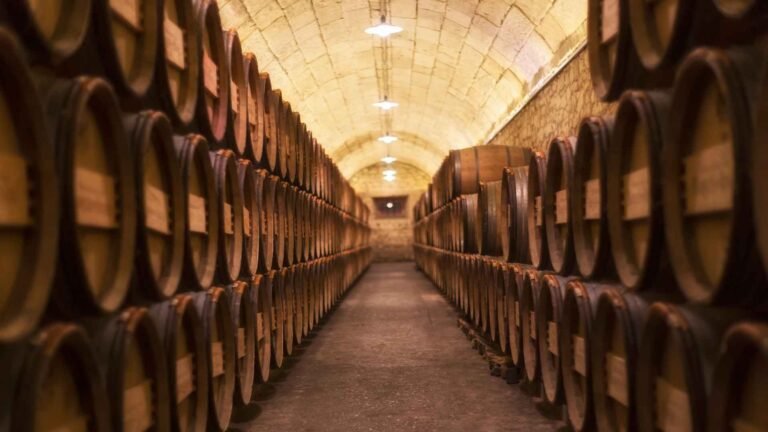The wines are made in a series of processes that we are going to detail point by point, indicating the differences to make rosés, reds or whites, as well as special procedures for sweet wines.
– HARVESTING manual or mechanical harvest of grape bunches.
– Transport to the winery and unloading of the bunches in presses (stainless steel hoppers). Depending on the type of wine, the hoppers circulate the grapes through a selection table, or they directly proceed to destemming and grinding.
– SELECTION manual of bunches and / or grains for mid and high range wines.
– DESTEMMING (separation of the grape grains from the stalk) AND GRINDING. In this stage, SO2 (Sulfur Anhydride) is added, which prevents premature oxidation, fulfilling an antiseptic, antioxidant and disinfectant function. Sulfur dioxide oxidizes before the grape, consuming oxygen, therefore, it avoids early oxidation of the grape. Some wines include on their labels “may contain sulfites” or “without added sulfites”, indicating whether or not Sulfur Anhydride was used in the production process. It’s used in approved minimum amounts, not harmful to humans. In any case, there are no wines without SO2 because the same fermentation generates it naturally, but most producers add more. White wines are more sensitive to microorganisms and therefore needs more SO2.
– MACERATION In red wines, the skin is macerated together with the juice so elements that are present in the skin migrate to the juice: aromas, anthocyanins (red pigments), flavones (yellow pigments) and tannins (polyphenols that coagulate saliva). This maceration is carried out at 25 to 28 degrees. Young, light and fruity red wines go through brief macerations (8 days). Wines with more body, to be aged in barrels, are subjected to prolonged macerations (up to 25/30 days), to achieve greater extraction of polynefoles. In the production of white wines, another technique called cold maceration, pre-fermentation maceration is used, to achieve a greater extraction of aromas and flavors without transfer of color and tannins. In this procedure, the juice and its skins are exposed to a cold of 3 to 8 degrees, which prevents the start of fermentation. If this were not done, white wines made with red grapes would not be able to get in contact with the skins. In rosé wines the bleeding technique is carried out, the grape juice is left with its skins for a period of 24/ 48 hours and 5/10% of that juice is extracted with some color from the skins to continue the maceration without them.
– ALCOHOLIC FERMENTATION: It’s the process by which the natural sugar of the grape (fructose and glucose) is converted into alcohol, carbon dioxide, caloric energy, acetic and succinic acid, other alcohols such as glycerol and other organoleptic substances due to the metabolic action of yeasts. It’s carried out in concrete sinks, tank feet, stainless steel tanks, oak barrels/casks or cement containers. Hygiene and temperature conditions are very important at this stage. Yeasts are of the saccaromyces species and produce alcohol only in an anaerobic environment, with very little oxygen. In an aerobic environment, they reproduce, generating water and carbon dioxide but not alcohol. Yeasts can be native or selected. The native or indigenous are those that are found naturally on the skin of the grapes, they form a waxy layer called pruin that enters the skin when grinding. The selected yeasts are those that are evaluated and chosen in the laboratory to reproduce, multiply, dissect, vacuum pack, market and add to the grape must, in order to better control the fermentation process. These have better resistance to alcohol, adapt to different strains and have the ability to generate more aromas. In the case of red wines, fermentation takes place with skins and in the case of white wines, it’s generally produced without skins, extracting primary fruity, floral and herbal aromas. Whites are generally fermented in stainless steel tanks, except for chardonnay, which is fermented in oak barrels and with skins as an exception. Fermentation takes place at a temperature of 15 to 20 degrees, in whites occurs at a lower temperature than in reds.
– Naturally, what is known as a cap is formed on top of tanks or barrels. Grape seeds and skins accumulate in the upper part of the grape must due to the action of carbon dioxide. To achieve greater extraction of aromatic components, color (anthocyanins) and tannins, different processes are carried out in the winery. Their objective is to achieve greater contact between the solids of the grape must and the liquids. These processes bring oxygen to the grape must, which allows the yeast to reproduce.
1. REASSEMBLY In this process, the liquid is extracted from the bottom of the tank by using a pump and it’s injected through a series of sprinklers on the cap. In this way, the liquid is mixed with the skins and seeds. It can be done according to the decision of each winemaker 2 to 3 times a day for several weeks to break the cap.
2. PISONAJE or PIGEAGE This procedure is manual or mechanical, through a manual or pneumatic tamper the cap is broken and the solids sinks into the grape juice. When it’s performed in barrels it is called bastonnage.
3. DELESTAGE This technique consists of extracting all the liquid from the tank to another tank, using a pump. The cap is allowed to press under its own weight and the liquid is pumped over the skin to remove it. The wine is tasted regularly to determine when the yeasts have consumed the sugar and it must be discovered. This wine is called drop wine.
– DISCOVER It’s the separation of the skins and seeds from the liquid grape juice. The tap of the tank is opened and once all the liquid has been removed, the solids remain below.
– PRESSING The skins are placed in a pneumatic press to extract all the liquid. This wine is called press wine. Inside the pneumatic press, there is a bladder or bag that fills with air and presses the skins and seeds into channels through which the liquid passes.
– MALOLACTIC FERMENTATION It’s the process by which the intense malic acid present in grapes, by the action of the bacteria leuconoscoc oenos, ferments and is transformed into lactic acid and diacetyl. This fermentation takes place between 20 and 25 degrees. Makes red wines smoother, creamier and more unctuous. Diacetyl is the precursor to the butter flavor in wines. This process is necessary for reds and optional for whites. This fermentation process is interrupted with SO2. The total acidity of the wine decreases between 1 and 3 grams per litre. In most of white wines, malolactic fermentation is not carried out because winemakers choose to conserve all the natural acidity of the wine, in other cases, it’s done totally or partially to achieve smoother and more unctuous textures.
– AGING in barrels or casks (may not be done in the case of young wines). It’s a resource to give greater aromatic complexity to wines. Today the aim is to accentuate the varietal characteristics of the wine and the terroir, with a more limited use of wood. In some way, over-ageing standardizes, homogenizes the wines, the aromatic precursors of the wood appease the floral, fruity and herbaceous aromas and flavours of the variety. The ageing in barrels gives the wine tannins from the wood, aromas derived from oak and, in turn, allows micro-oxygenation. AMERICAN OAK Provides aromas of vanilla and coconut / FRENCH OAK Provides aromas of cloves, pepper, dried fruits and balsamic / LEVELS OF WOOD TOASTING There are levels of exposure of wood to fire to achieve notes of cocoa, coffee and even ash or smoked. In the case of whites, barrel ageing is used very moderately to avoid invading the varietal typicality, opting for non-invasive second or third use barrels, so the wood is not so protagonist.
– BLENDS There are blend wines where different varietals are mixed, or even the same varietal, a part fermented in barrel with another part fermented in a stainless steel tank. There are also rosé wines that are made by blend, that is, mixing white wine and a fraction of red wine, although this is not so common nowadays.
– STABILIZATION Through this process the turbidity of the wine, the small vegetable particles in suspension, is eliminated. The objective is to achieve a bright and clear wine as well as to improve its health and durability conditions. CHEMICAL STABILIZATION OR CLARIFICATION It’s carried out by adding proteins such as casein (milk protein), bentonite (which is clay) or ovalbumin (egg protein), which coagulate and precipitate at the bottom of the tank dragging all the suspended particles with it. These particles are remains of skin, yeasts, plant tissue and seeds / PHYSICAL STABILIZATION It’s carried out by taking the tank to low temperatures. The tartaric acid, calcium and potassium that the plant takes from the soil, form solid crystals that adhere to the cork if the bottle is lying. The wines that remain in barrels for two winters stabilize themselves. In young and white wines, this crystallization is provoked. In a 12 degree wine, for example, it is brought to -5 degrees (half minus 1 below zero) for 7 days before filtering and bottling / MICROBIOLOGICAL STABILIZATION This last step is not always done, because some desired components such as aromas and color are also lost in the process. It’s suggested for young, fast-marketing wines. It’s made with a series of filters (earth, diatom, cellulose, algae and sterilizing cartridges with 0.66 micron holes) through which the wine is passed and which retain unwanted particles. The natural preservatives in wine are alcohol, acidity and tannins. They help the wine to be preserved, however, it’s a natural product so it evolves over time even if it’s stabilized.
– FRACTIONED AND STOPPED In this stage, oxygen is controlled to preserve the aromas, color and flavor of the wine. The fractionation room is subject to strict hygiene controls and supplies stocks: bottles, corks, capsules, labels, stamps and boxes. The fractionating machine washes the bottles, fills them, places the corks, capsules, labels, counter-labels and packaging. In addition to the fractionation in the bottle, there is also the option of 50-liter barrels for mass consumption wines that are served by tap in bars and restaurants. There are even canned or bag-in-box wines. The closures can be natural corks, synthetic stoppers or screw cap (srewcap).
– STOWAGE IN A BOTTLE Medium and high-end wines usually spend 6 to 24 months of storage in the cellar before being marketed.
The standard production process ends here. However, there are special techniques for other types of wines that we are going to see next.
SPECIAL THERMOVINIFICATION TECHNIQUE
It’s a process that is applied to make large productions, high turnover wines. Thermovinifiers are used to obtain a greater extraction of color and aromas in a shorter maceration time. A temperature of 40/50 degrees is applied to the grapes for 30 to 40 minutes. Then it’s brought to 60/80 degrees for 1 to 3 minutes, a sudden cooling is carried out, it’s pressed and a cold maceration of the grape must is done at 18 to 22 degrees without the skins. In this technique, the skin’s cell wall is broken and anthocyanins, aroma and some tannins are quickly released. Through the use of this technology, 70% of the coloring matter is extracted from the skins, while only 30/40% is extracted through traditional winemaking.
Young, fruity red wines are obtained, with an intense color and good acidity, for a quick release to the market and consumption.
CARBON MACERATION TECHNIQUE
This technique is also called intracellular fermentation. In this case, the grapes are placed in a tank without oxygen (anaerobic medium) and carbon dioxide is injected. This causes a breakdown of the cell walls of the grape, the release of colors, aromas and enzymatic intracellular fermentation without the intervention of yeasts. Using this methodology, rapid migration of colors and aromas to the grape must is achieved and, also ethanol is generated. The enzyme transforms part of the sugar into ethanol 1.5 to 2.5 degrees. In ancient times, this carbonic maceration was carried out in a natural way, the same grapes produced carbonic gas in the fermentation process. The grapes broke themselves under their own weight. Then, the grape must is pressed and alcoholic fermentation takes place with the action of the yeasts for 10 to 15 days at a low temperature as if it were white wine, at 23 degrees. This technique produces young, fruity wines with a low amount of tannins, intense color and aroma but for fast consume, not to be stored. An example of this type of winemaking is Beaujolais Nouveau in France (Gamay grape, 4/5 euros on the market). It’s drunk within one year with all its explosion of aromas and freshness.
ORANGE WINE PRODUCTION TECHNIQUE
David Harvey, an English businessman started the development of this style of wines. The orange wine was made since ancient times in jars or clay amphoras where the complete bunches of white grapes were placed, with skins, seeds, without destemming. This way, maceration and alcoholic fermentation were generated simultaneously, and the skins were in contact with the grape must throughout the process for 6, 8 and up to 12 months. There is even post-fermentation maceration, once the yeasts have finished their work, the wine continues to macerate in contact with the skins. This resulted in very aromatic wines, of a characteristic amber color, with good body, tannins, aromas of nuts, honey, spices and a certain level of wanted oxidation. Today there are some wineries that replicate the technique such as Josko Gravner in Friuli, in northern Italy.
TECHNIQUES FOR PREPARING SWEET WINES
Sweet wine has high residual sugar perceptible on the palate because the yeast is not allowed to consume all the sugar. In addition, they are usually made with grapes with high sugar content. There are different styles of sweet wines, none of them has added sugar in their production process:
– Late harvest: Cosecha tardía in Spanish or vendange tardive in French. In these wines the grapes are allowed to ripen to the maximum possible, they are harvested at the end of April / beginning of May in the northern hemisphere. A late harvest wine can have 80 to 130 grams per litre of sugar. It’s important that they maintain a good sugar-acidity balance. In the winery, fermentation is interrupted with a drop in temperature through the circulation of cold water, so the yeasts are inhibited, stop consuming sugar and thus sugar can remain in the wine. The wine is filtered, separating it from the yeaststo obtain this sweet taste. There are late harvest cut wines, or of any type of varietal, with or without barrel ageing.
– Raisins: This technique consists of dehydrating the grape so that it concentrates sugars and flavor. In Andalusia where there is very little rainfall, the process is carried out by sunning, the bunches are exposed on the straw to the sun until they are partially dry. In Italy, it’s done by hanging the bunches in roofed and well-aerated sheds (Pasito wine). Then the fermentation takes place, it’s interrupted to preserve residual sugar and the wine takes on raisin nuances.
– From Botrytis: It’s the elite of the world’s white wines. Botrytis cinerea is a fungus that occurs on grapes in autumn in river basins with morning dew, where the vines are then exposed to the sun in a dry climate. The fungus in this case does not rot the grape, it simply dehydrates it, which generates a concentration of sugars and acids and gives it a characteristic flavor and aroma. The harvest in these cases is always manual. If natural conditions are not present, these wines cannot be produced. They allow ageing for decades, are delicious and highly appreciated internationally (Examples, Sauternes, Tokaji).
– Icewine: Icewine from Ontario, Canada or Eiswein from Austria or Germany are examples. This type of wine is typical of very cold climates, with short cycle strains. The grapes are harvested when frozen, at night, to ensure that they arrive in that state at the winery. They are squeezed, pressed at minus 7 degrees and filtered. The key element is that free water (the water present in cells that is not bound to sugars) freezes at a higher temperature. This difference in the freezing point allows the free water crystals to be separated from the bound water, obtaining a higher concentration of sugar, acidity and aromas. It is also made artificially in places without snow. The separation of water by freezing is called cryoconcentration, natural when it occurs naturally.
– Fortified: This type of wine emerged in port cities such as Porto, Cádiz or Sicily, as a necessity to export wines. They were required to be more stable, with higher graduation, so they would not deteriorate on long boat trips. For stabilize them, wine alcohol derived from the distillation of wine is added to them. There are two techniques: 1. Mistela Technique: In which the unfermented wine grape must, with all its sugar, is fortified with alcohol until it reaches 12 to 15 degrees. 2. Header technique: In this case the wine is fermented, the fermentation is interrupted with cold to preserve sugars and alcohol is added until it reaches 15/18 degrees. The process is finished in barrels. This technique can also be used to make fortified dry wines, where it’s left to ferment until the yeasts consume all the sugar (such as Jerez from Spain).




